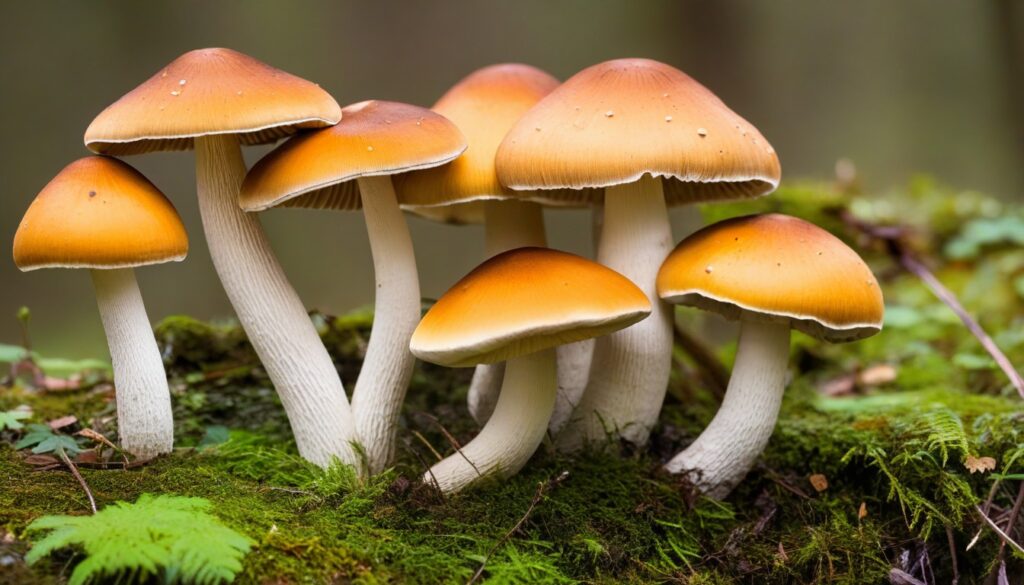Ohio is home to a diverse variety of edible fall mushrooms waiting to be discovered. If you’re a seasoned forager or just starting, this guide will prepare you with valuable insights and tips to venture through Ohio’s forests. We offer everything you need to know, from the popular edible mushrooms to foraging safety and more.
Key Takeaways:
- Ohio forests offer a diverse range of foraging opportunities for edible fall mushrooms.
- Proper identification is essential to distinguish between edible and toxic mushrooms.
- Guidelines for sustainable and ethical foraging practices help preserve Ohio’s ecosystems.
- With the right knowledge and tools, foraging is an exciting outdoor experience that connects you with nature and results in a delicious reward.
Why Forage for Edible Fall Mushrooms in Ohio?
For many nature enthusiasts and foodies, foraging for edible fall mushrooms in Ohio is a rewarding and unique experience. Not only do you get to explore the beautiful forests of Ohio, but you also get to discover a diverse range of edible mushrooms that can enhance the flavor and texture of your culinary creations.
Foraging for edible fall mushrooms is an exciting outdoor activity that can be enjoyed solo or with friends and family. It is an opportunity to unplug from technology and connect with nature, while engaging in a fun and adventurous hobby.
Ohio boasts an abundance of edible fall mushrooms, from the delicious honey mushrooms to the flavorful chicken of the woods. Forager’s baskets can overflow with treasures, including chanterelles, oysters, shaggy manes, and hedgehogs. When foraging in Ohio, you also have the opportunity to discover rare and unique species that are not found in other regions.
For those interested in sustainable and ecological living, foraging for edible fall mushrooms offers a way to connect with nature on a more intimate level. It allows us to understand and appreciate the natural resources around us, and emphasizes the importance of protecting and preserving these resources for future generations.
Popular Edible Fall Mushrooms in Ohio
Ohio is home to a variety of edible fall mushrooms coveted by foragers and chefs alike. Let’s take a closer look at some of the most popular species and discover their unique characteristics.
|
Mushroom |
Scientific Name |
Habitat |
Culinary Uses |
|---|---|---|---|
|
Honey Mushrooms |
Armillaria spp. |
Deciduous and coniferous forests |
Can be sautéed, grilled, or used in sauces and soups |
|
Hen of the Woods |
Grifola frondosa |
At the base of hardwood trees |
Can be roasted, sautéed, or used in soups and stews |
|
Chicken of the Woods |
Laetiporus sulphureus |
On living or dead trees, particularly oak |
Can be breaded and fried, sautéed, or used in vegetarian dishes |
|
Chanterelles |
Cantharellus spp. |
Mixed deciduous and coniferous forests |
Can be grilled, sautéed, or used in sauces and pasta dishes |
|
Black Trumpets |
Craterellus cornucopioides |
Under hardwood trees, especially oak |
Can be sautéed, pickled, or used in risottos and sauces |
While these are some of the most popular edible fall mushrooms in Ohio, it’s important to note that proper identification is crucial, as many toxic mushrooms have edible look-alikes. Take the time to research and familiarize yourself with each species, and always err on the side of caution.
Finding the Right Spots: Where to Forage for Edible Fall Mushrooms in Ohio
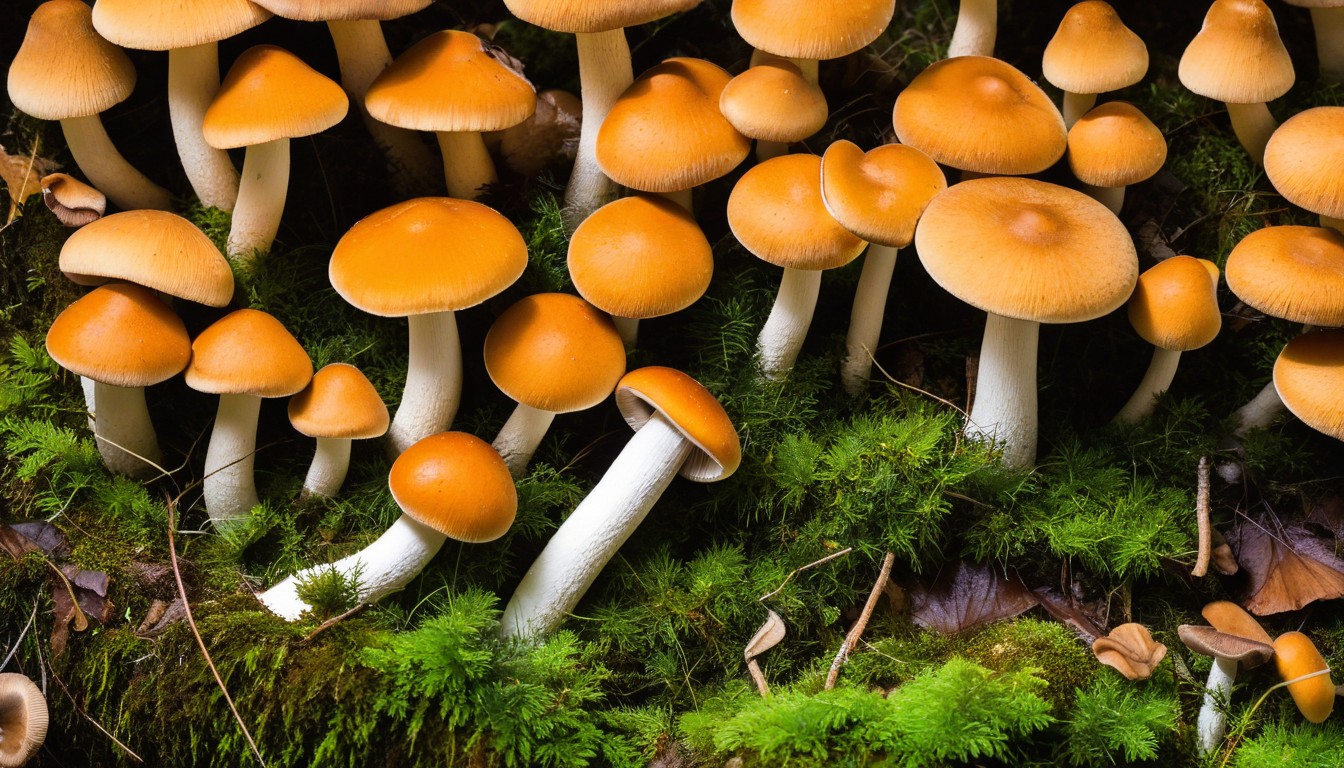
Foraging for edible fall mushrooms in Ohio is an exciting and rewarding activity for both experienced and novice mushroom enthusiasts. However, knowing where to look is essential for a successful and bountiful experience.
Types of Forests:
|
Forest Type |
Common Edible Mushrooms |
|---|---|
|
Deciduous Forests |
Chanterelles, Hen of the Woods, Black Trumpets, Honey Mushrooms, and Chicken of the Woods. |
|
Coniferous Forests |
Porcini Mushrooms, Hedgehogs, and Candy Caps. |
|
Mixed Forests |
Morels, Hen of the Woods, Oysters, and Chanterelles. |
Tree associations are another valuable clue for finding edible fall mushrooms in Ohio. Look for mushrooms around trees that they associate well with:
- Hen of the Woods – oak, chestnut, and beech trees
- Chanterelles – beech, oak, and birch trees
- Black Trumpets – hardwoods, especially oaks and beeches
Environmental factors such as rainfall, temperature, and humidity also play a significant role in the growth and distribution of fall mushrooms. Overcast days following rainfall are ideal for mushroom hunting.
Remember to obtain permission from landowners before foraging for mushrooms on private property and to avoid picking mushrooms from polluted areas such as roadsides or land treated with pesticides and chemical fertilizers.
With these tips in mind, adventure into Ohio’s forests and discover the amazing variety of edible fall mushrooms that nature has to offer.
Foraging Tools and Safety Precautions in Ohio
Foraging for edible fall mushrooms in Ohio can be a thrilling and enriching experience. But before you head out to the woods, you need to prepare yourself with the right foraging tools and take necessary safety precautions.
Essential Foraging Tools
Pack the following foraging tools to have a successful foraging experience in Ohio:
- A basket or a mesh bag to store your harvested mushrooms. Avoid plastic bags as they can trap moisture and cause your mushrooms to rot.
- A knife for cutting the mushrooms neatly and cleanly. A dull or dirty knife can damage the mushrooms or cause accidents.
- A field guidebook or an app to help you identify the different mushroom species. Download the popular apps like iNaturalist and Mushroom ID.
- A compass, a map, or a GPS device to prevent getting lost or disoriented inside the forest.
- A whistle, a mirror, or any SOS signaling device to alert others in case of an emergency.
Safety Precautions
Foraging for mushrooms in Ohio forests carries some risks, such as exposure to poison ivy, ticks, mosquitos, and other insects, as well as the possibility of getting lost, encountering wildlife, or picking non-edible or poisonous mushrooms. Keep the following safety precautions in mind:
- Research and learn about the different edible and non-edible fall mushroom species before heading to the forest. Avoid picking mushrooms that you are unsure about or that have toxic lookalikes.
- Wear protective clothing and footwear that cover your body and prevent tick bites, scratches, and scrapes. Carry bug spray and sunscreen.
- Stick to established trails and avoid venturing into prohibited or dangerous areas of the forest. Respect private property and obtain permission when necessary.
- Inform someone about your foraging location and expected return time. Don’t forage alone, and consider joining a local foraging group for added safety and knowledge.
- Dispose of your waste properly and avoid damaging the environment. Don’t over-harvest or take more than what you need. Leave some mushrooms behind for others and for the ecosystem to thrive.
|
Safety Precautions | |
|---|---|
|
-Research the different mushroom species before heading to the forest |
-Stick to established trails |
|
-Wear protective clothing and footwear |
-Avoid over-harvesting or taking more than what you need |
|
-Carry bug spray and sunscreen |
-Leave some mushrooms behind for others and for the ecosystem to thrive |
|
-Inform someone about your foraging location and expected return time |
-Join a local foraging group for safety and knowledge |
|
-Don’t forage alone |
-Dispose of your waste properly |
By following these foraging tools and safety precautions, you can ensure a memorable and fruitful experience while foraging for edible fall mushrooms in Ohio. Stay safe, have fun, and enjoy the abundant natural treasures that Ohio has in store for you!
Identifying Edible Fall Mushrooms: Tips and Techniques
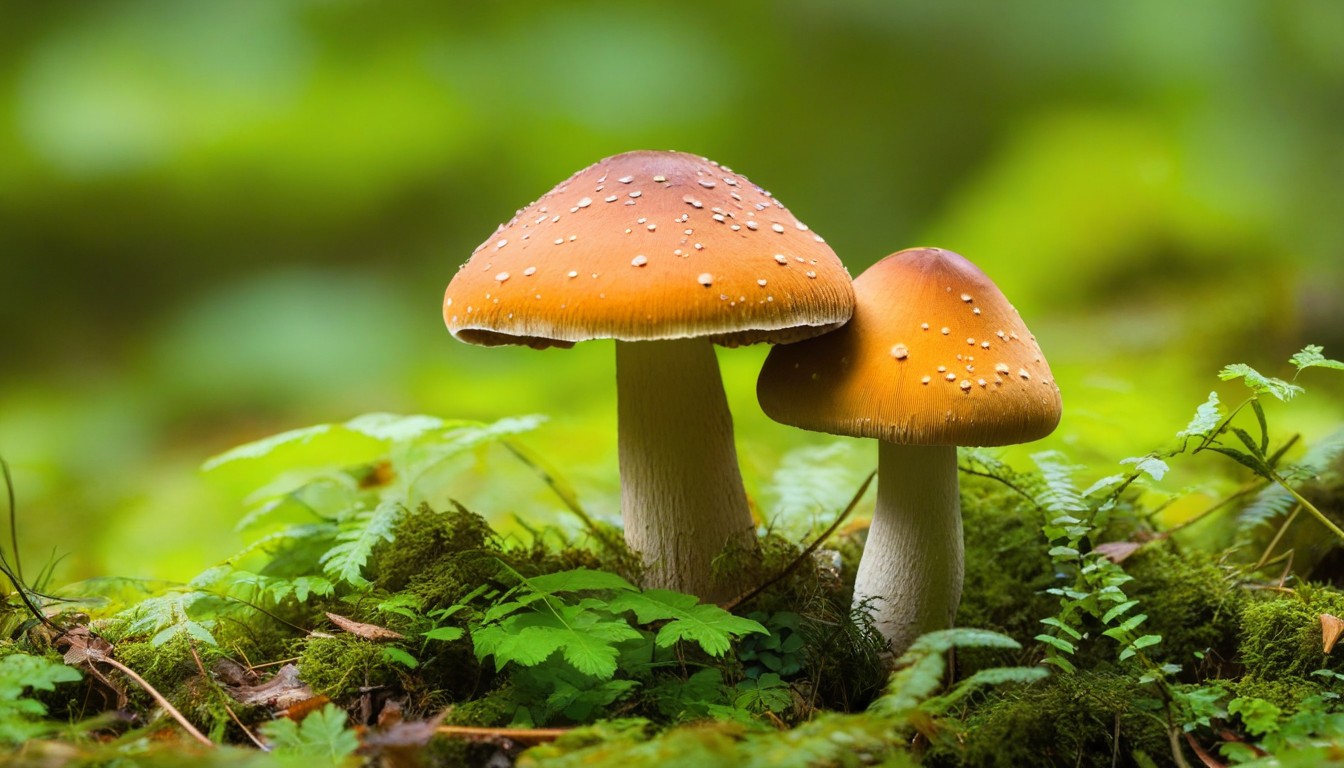
Foraging for edible fall mushrooms in Ohio can be a fun and rewarding experience, provided you can accurately identify which ones are safe to eat. Here are some tips and techniques to help you become more proficient at identifying various edible fall mushrooms:
1. Focus on Visual Cues
When identifying edible fall mushrooms, start with their appearance. Look at the cap shape, color, texture, and markings as well as the shape and size of the stem. Take note of any changes in appearance as the mushroom ages.
Tip: Take photos of any mushrooms you don’t recognize to assist with identification later.
2. Know Your Mushroom Groups
There are several groups of mushrooms in Ohio, and each has its own set of characteristics to look for when identifying them. For example, gilled mushrooms have thin, blade-like structures under their caps, while bolete mushrooms have pores instead of gills.
Tip: Become familiar with the basic features of different mushroom groups to narrow down your search and make identification easier.
3. Use Your Sense of Smell
Many edible fall mushrooms have a distinct odor that can help with identification. For instance, the hen-of-the-woods mushroom (Grifola frondosa) has a sweet, earthy aroma, while the chanterelle mushroom (Cantharellus cibarius) smells fruity and apricot-like.
Tip: Take a good whiff of the mushroom to identify any unique odors.
4. Perform a Spore Print
A spore print is a simple technique that can help you narrow down the potential identification of a mushroom. Place a fresh mushroom cap face down on a piece of paper for a few hours. When you lift the cap, you should see a pattern of spores left on the paper. This can help you determine the color of the spores, which is an important feature to consider when identifying mushrooms.
Tip: Use white or black paper to perform your spore print for better visibility.
5. Consult a Visual Guide
There are many books, websites, and mobile apps that can help you with mushroom identification. Look for reputable sources with clear photos, reliable descriptions, and easy-to-use search functions. Some popular resources include “Mushrooms of the Midwest” by Michael Kuo and “Mushroom Identify – Automatic Picture Recognition” app.
Tip: Always double-check your mushroom identification with multiple sources before consuming or cooking them.
With these tips and techniques, you can start identifying edible fall mushrooms in Ohio safely and confidently. Remember to always forage responsibly and sustainably to ensure the conservation of Ohio’s natural resources.
Preparing and Cooking Edible Fall Mushrooms
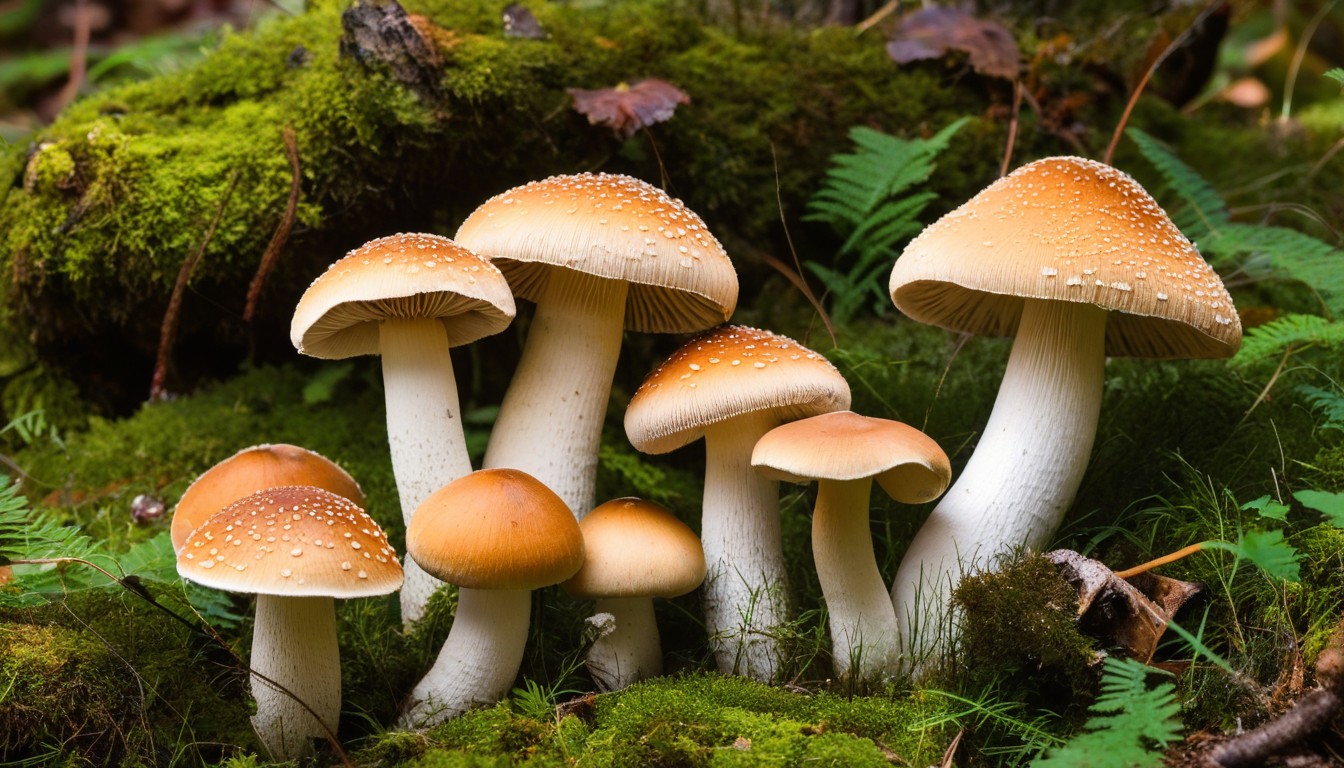
Now that you’ve successfully foraged for an array of flavorful and nourishing edible fall mushrooms in Ohio, it’s time to put them to use in your kitchen. Here are some tried and tested cooking techniques to make the most out of your mushroom harvest:
- Sauté: Heat a pan with some olive oil or butter. Add sliced mushrooms, salt, and pepper. Sauté for about 5-7 minutes, stirring occasionally, until the mushrooms are soft and golden brown. Use them as a side dish, topping for toast, or filling for omelets.
- Bake: Preheat the oven to 375°F. Clean and chop your mushrooms, add them to a baking dish, and drizzle them with olive oil or melted butter. Add chopped garlic, thyme, rosemary, or any other herbs and spices you prefer. Bake for around 15-20 minutes until they turn crispy around the edges.
- Grill: Clean and trim larger mushrooms like portobellos or shiitakes. Brush them with a mixture of oil, vinegar, soy sauce, and garlic. Grill them on high heat for 4-5 minutes per side, until tender. Serve them with a side salad or as a burger patty alternative.
- Dry: Dehydrate your mushrooms either in the sun or using a dehydrator. Store them in an airtight container and use them as a flavorful seasoning for your soups, stews, or sauces.
With infinite possibilities, mushrooms are a versatile ingredient that can be used in a variety of dishes. Check out our favorite mushroom recipes to get inspiration:
“Mushrooms are a game-changer in the culinary world. They are fleshy, savory, and full of umami flavors that elevate any dish they are used in. Whether in soups, sauces, stir-fries, or stews, mushrooms add a depth of flavor and texture that make them an essential ingredient for any food lover.” – Chef Sarah Smith
Here are some of our top picks for mushroom recipes:
|
Recipe Name |
Category |
Description |
|---|---|---|
|
Wild Mushroom Risotto |
Main Dish |
A creamy and comforting rice dish made with a variety of wild mushrooms, white wine, and Parmesan cheese. |
|
Mushroom Bourguignon |
Main Dish |
A vegetarian twist on the classic French dish, made with meaty portobello mushrooms, red wine, and herbs. |
|
Roasted Mushroom Salad |
Side Dish |
A vibrant and colorful salad made with roasted mushrooms, leafy greens, cherry tomatoes, and a zesty vinaigrette dressing. |
|
Mushroom and Gouda Grilled Cheese |
Sandwich |
A gooey and satisfying sandwich made with sautéed mushrooms, smoked Gouda cheese, and crusty bread. |
|
Mushroom Soup |
Soup |
A velvety and rich soup made with a medley of mushrooms, shallots, herbs, and cream. |
Remember to always cook your mushrooms thoroughly to destroy any potentially harmful bacteria or toxins. Happy cooking!
Seasonal Variations: Edible Fall Mushrooms in Ohio
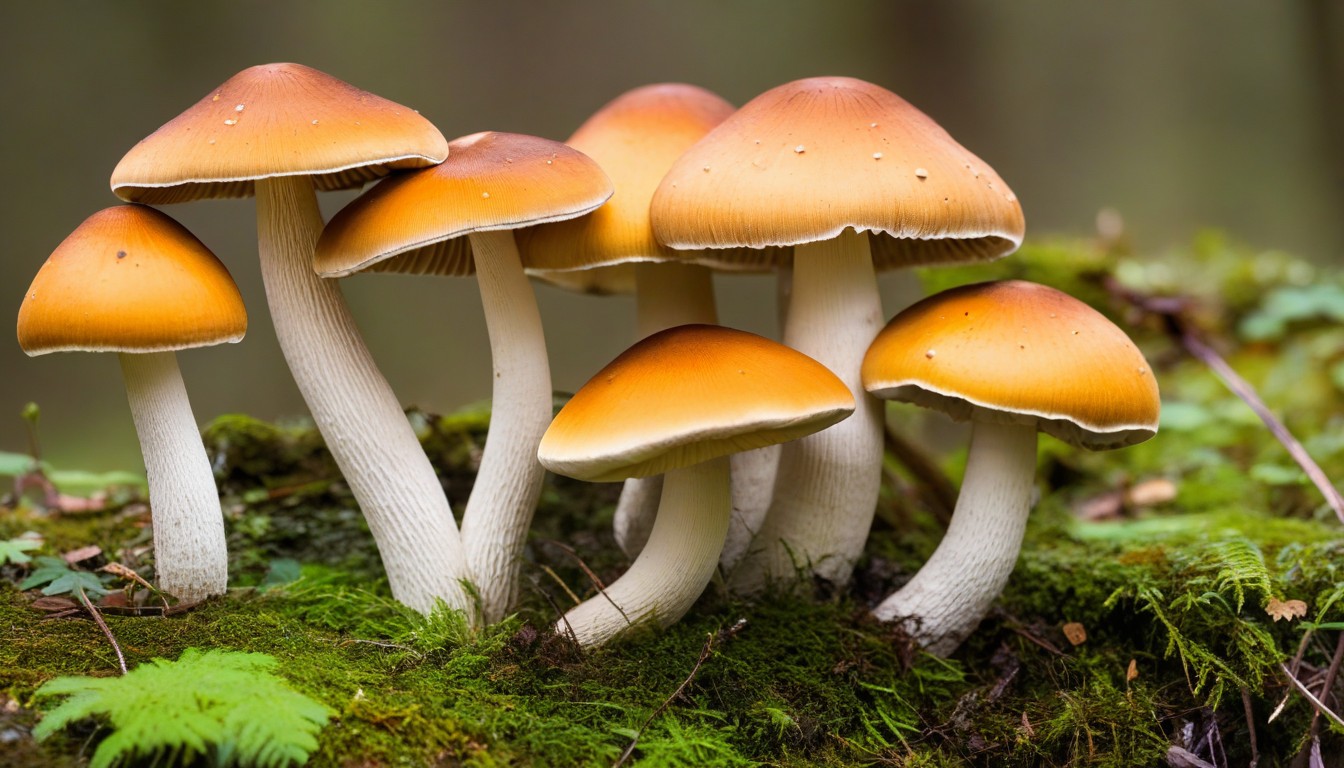
While fall is a prime season for foraging for edible mushrooms in Ohio, the weather and ecosystem can impact the availability and prevalence of certain species. It’s crucial to be aware of the seasonal variations and potential challenges you may encounter while exploring the forests for edible fall mushrooms in Ohio.
Tip: To increase your chances of finding edible fall mushrooms, research the weather conditions in advance and explore different habitats, such as mixed deciduous forests, coniferous forests, or oak-hickory forests.
Seasonal Variations of Edible Fall Mushrooms in Ohio
Ohio’s climate is characterized by cold winters and humid summers, making the fall season with its milder temperatures and frequent rains optimal for mushroom growth. However, different species have their peak throughout the fall season.
|
Mushroom Name |
Availability in Ohio |
|---|---|
|
Honey Mushroom (Armillaria spp.) |
September to November |
|
Oysters (Pleurotus spp.) |
Early September to late November |
|
Chicken of the Woods (Laetiporus sulphureus) |
August to November |
|
Chanterelles (Cantharellus spp.) |
September to November |
|
Hedgehogs (Hydnum spp.) |
October to November |
It’s essential to research the seasonal patterns of the mushrooms you intend to forage to ensure a successful and safe experience.
Challenges of Edible Fall Mushroom Foraging in Ohio
While Ohio has a diverse range of edible fall mushrooms, some challenges come with foraging for them.
- Competition with other foragers.
- Increase of poisonous mushroom growth after heavy rainfall.
- Difficulty in distinguishing between edible and poisonous look-alike mushrooms.
- The potential growth of toxins within the mushroom if consumed by humans.
It’s crucial to be aware of these challenges before venturing into Ohio’s forests for fall mushroom foraging. Always take the necessary precautions and research beforehand to ensure a safe and successful experience.
Sustainability and Ethical Foraging Practices
Foraging for edible fall mushrooms in Ohio can be an enjoyable and sustainable way to connect with nature and discover new culinary possibilities. However, it is crucial to practice ethical foraging techniques that preserve the balance of Ohio’s ecosystems and ensure the sustainability of mushroom populations for future generations to enjoy.
Here are some key principles of sustainable and ethical foraging to keep in mind:
- Know Before You Go: Take the time to research the specific mushrooms you’re interested in and become familiar with their characteristics and preferred habitats. This will help you avoid accidentally foraging for endangered species or harvesting mushrooms that are not suitable for consumption.
- Harvest Responsibly: Only take what you need and leave the rest for other foragers and the ecosystem. Don’t uproot mushrooms or disturb the forest floor, and avoid harvesting mushrooms that are too small or immature.
- Respect the Ecosystem: Foraging should not harm the environment or disrupt the balance of the ecosystem. Avoid trampling on other plants or disturbing wildlife, and stick to designated trails and areas to avoid damaging delicate habitats.
- Share Your Knowledge: Encourage others to practice sustainable and ethical foraging practices by sharing your knowledge and experience. Teach others how to identify and harvest mushrooms responsibly, and encourage them to do the same for others.
By abiding by these principles and respecting the delicate balance of Ohio’s ecosystems, you can enjoy the benefits of foraging while also contributing to the preservation of Ohio’s unique natural resources.
Useful Resources for Edible Fall Mushroom Foraging in Ohio
If you’re looking to expand your knowledge and skills in foraging for edible fall mushrooms in Ohio, there are plenty of useful resources available to you. Here are some of the top resources you can explore:
Field Guides
Field guides are a fantastic resource for identifying different species of fall mushrooms in Ohio. Some popular guides include:
- “Mushrooms of the Midwest” by Michael Kuo and Andrew Methven
- “Mushrooms of Northeastern North America” by Timothy J. Baroni
- “Mushrooms of Ohio: An Identification Guide” by Walt Sturgeon and Teresa Marrone
Online Forums
Online forums can offer a wealth of information and advice from experienced mushroom foragers. Check out these forums to connect with other mushroom enthusiasts:
- The Great Morel: A popular forum for morel and other types of mushroom hunters.
- Wild Mushrooming: An online community dedicated to wild mushroom hunting and identification.
Workshops and Training
If you want to learn more about mushroom foraging, attending a workshop or training program can offer hands-on experience and expert guidance. Here are a few organizations that offer mushroom foraging workshops in Ohio:
- The Ohio Mushroom Society: Offers frequent forays and workshops for members.
- The University of Akron Field Station: Offers workshops and courses on mushroom identification and ecology.
Local Foraging Groups
Joining a local foraging group can be a great way to connect with other foragers and discover new mushroom hunting spots in your area. Here are some local foraging groups in Ohio:
- Ohio Mushroom Society: A non-profit organization dedicated to promoting the understanding and appreciation of mushrooms.
- Mushroom Club of Georgia: A group that offers forays and events for mushroom enthusiasts in the Georgia area.
Conclusion
Foraging for edible fall mushrooms in Ohio is a delightful way to connect with nature, explore its beauty, and discover its hidden treasures. By following the tips and insights shared in this guide, you can ensure a safe and successful foraging experience.
Remember to equip yourself with the right tools, practice responsible and sustainable foraging, and respect the delicate balance of Ohio’s ecosystems. With patience, perseverance, and a sense of adventure, you can indulge in the unique flavors and textures of Ohio’s mushroom species.
So, gear up, head out, and start exploring the fascinating world of edible fall mushrooms in Ohio today! Happy foraging!
FAQ
Why should I forage for edible fall mushrooms in Ohio?
Foraging for edible fall mushrooms in Ohio allows you to connect with nature, engage in an exciting outdoor activity, and discover the abundance of edible treasures that Ohio’s forests have to offer.
What are some popular edible fall mushrooms in Ohio?
Some popular edible fall mushrooms in Ohio include honey mushrooms (Armillaria spp.) and chicken of the woods (Laetiporus sulphureus). These mushrooms have unique flavors and can be used in a variety of culinary dishes.
Where can I forage for edible fall mushrooms in Ohio?
To find the right spots for foraging edible fall mushrooms in Ohio, it’s important to explore different types of forests, look for specific tree associations, and consider the environmental conditions that support the growth of these mushrooms.
What tools do I need for foraging edible fall mushrooms in Ohio?
Essential tools for foraging edible fall mushrooms in Ohio include a mushroom knife or foraging basket, gloves, a field guide, and a small brush or knife for cleaning the mushrooms.
How can I identify edible fall mushrooms in Ohio?
Proper identification is crucial when foraging for edible fall mushrooms in Ohio. It’s important to learn about key features, visual cues, and distinguishing characteristics of different mushroom species to avoid consuming toxic look-alikes.
How should I prepare and cook edible fall mushrooms?
Once you’ve successfully foraged for edible fall mushrooms in Ohio, there are various ways to prepare and cook them. This section will provide inspiring recipes, cooking techniques, and preservation methods to enhance the flavors and textures of these culinary delights.
Are there seasonal variations in edible fall mushrooms in Ohio?
Yes, Ohio’s weather and ecosystem can influence the availability and prevalence of certain edible fall mushroom species. It’s important to understand the seasonal variations and potential challenges you may encounter while foraging for fall mushrooms in Ohio.
How can I practice sustainable and ethical foraging for edible fall mushrooms in Ohio?
It’s crucial to practice sustainable and ethical foraging to ensure the preservation of Ohio’s ecosystems. This section will delve into the principles of sustainable foraging, responsible harvesting techniques, and guidelines for preserving the delicate balance of Ohio’s forests.
What are some useful resources for foraging edible fall mushrooms in Ohio?
To further enhance your knowledge and skills in foraging for edible fall mushrooms in Ohio, we have compiled a list of useful resources. These resources include field guides, online forums, workshops, and local foraging groups.

